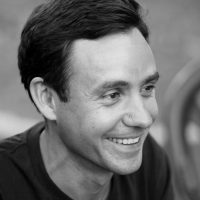
Photograph by Tony Kearney
Q&A with James Tylor
13.1.21
James Tylor shares some insights into his PHOTO 2021 commission Economics of Minerals, presented in partnership with the Metro Tunnel Creative Program. His work explores Australian cultural representations through the perspectives of his multicultural heritage, which comprises Nunga (Kaurna), Māori (Te Arawa) and European (English, Scottish, Irish, Dutch and Norwegian) ancestry.
Hello James, please start by telling us something about yourself that is not in your bio.
When I was a kid my mum didn’t want me to play rugby which was the major sport in Menindee in NSW, so we would drive 110 km each way from Menindee to Broken Hill on Friday and Sunday so I could play Aussie rules for South Broken Hill Roos under 11’s and we won a premiership. I have never played footy since I was 13 years old because I didn’t like footy or rugby.
What will you be exhibiting at PHOTO 2021?
I will be exhibiting my new series Economics of Minerals about the Australian mining industry with a case study on the town of Broken Hill in New South Wales.
What inspired this project?
I wanted to make a photographic series about the unsustainable nature of mining in Australia and I wanted to focus on Broken Hill as a case study because it has been depleted of its silver, zinc and lead deposits in just over a hundred years.
How does it relate to the theme for PHOTO 2021: ‘The Truth’?
This series intended to truthfully highlight the devastating impact of mining on the environment and natural resources for economic gain for business in Australia.
![Image: James Tylor, [Economics of Minerals] (detail), 2020.](https://photo.org.au/api/wp-content/uploads/2020/02/Economics-of-Minerals-2-2020-Silver-Vinyl-on-photographic-paper-100x100cm-200x200.jpg)
Image: James Tylor, Economics of Minerals (detail), 2020.
Can you tell us about the process of making this work?
The background to this project is that my family is from Broken Hill and I grew up in the region seeing and hearing about mining. Today the industry had slow down because of the lack of minerals and mining companies are now leaving Broken Hill. I wanted to document and highlight the impact of the mining of the resources and environment in the Barrier Ranges. I visited Broken Hill several times over two years to research and document the mines and the surrounding environment.
What do you hope audiences take from your work?
I hope people become more aware of the impact and the unsustainable nature of mining in Australia.
Which other artists or exhibitions are you looking forward to seeing at PHOTO 2021?
Hayley Millar Baker
Kent Morris
Maree Clarke
Brook Andrew
Hoda Afshar
Nici Cumpston
Michael Cook
Justin Varga
Paphaela Rosella
Robert Fielding
Damien Shen
Emmaline Zanelli
Kate Golding
And finally, what advice would you give to your 15 year old self?
When I was 15 I studied darkroom photography at school in Derby in the Kimberley region of Western Australia and I was inspired by that experience to pursue a career in photography as an adult. Now 20 years on I am a professional photographer and I make art that is meaningful about Australian history and contemporary society. I am very happy with the outcome. I don’t think I would change anything or do anything differently.
Find out more about Economics of Minerals here.